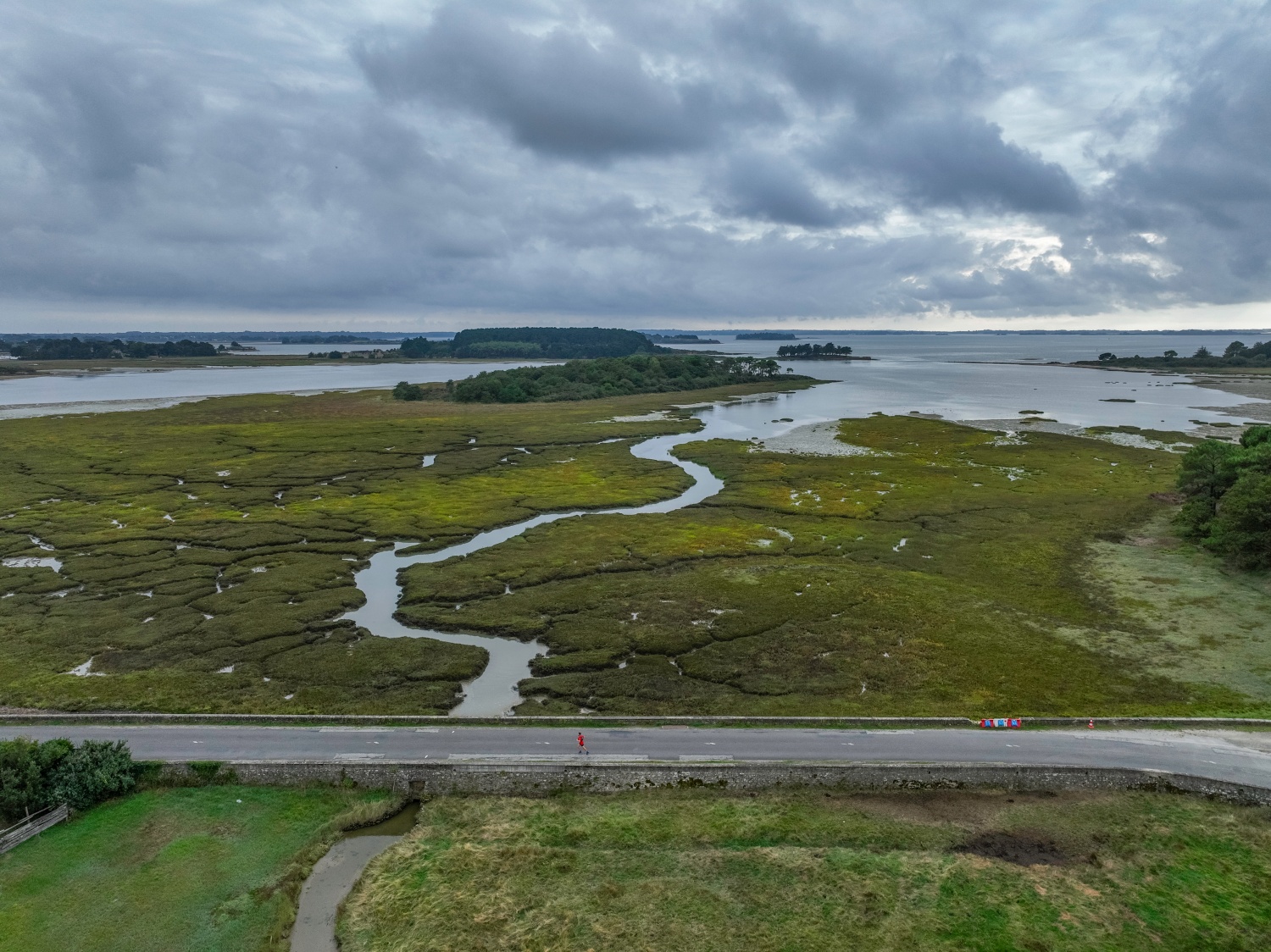
Following in Smugglers’ Footsteps
Created in 1791, the GR34 trail is also known as the Sentier des Douaniers (the Customs Officers’ Path) – so-called because French officials would tramp its entire length seeking to foil the coastal exploits of smugglers – and it has an iconic status in France. It is commonly billed as “the preferred long-distance footpath of the French”, and I’m eager to find out why.
Time is not on my side, however. So I decide to run, not walk, the Sentier des Culs Salés (bizarrely the “path of salty bottoms”), a 21km route from the town of Séné that follows in the footsteps of 19th century salt smugglers. It’s my first chance to dip a figurative toe into the GR34’s waters – and it doesn’t disappoint. As I run alongside expansive salt marshes, tidal bays, sandy beaches and sleepy fishing villages, I taste the salty air on my lips, feel the late afternoon sun on my neck, and let my worries float away on the sea breeze.

The following day I trade my running trainers for two wheels. The plan? A 40km gravel biking mission around the western shores of the Gulf of Morbihan, starting and finishing in the commune of Baden. We ride inland more than I expect, on tree-lined country tracks and joyously quiet backroads linking sleepy villages. But in Brittany the coast is never far away and – as if the route knows we need a “fix” of hazy coastal views – we’re treated to intermittent glimpses of Pointe d’Arradon, Île-aux-Moines, Port Blanc and Pointe de Locmiquel.
“One million people walk this route every year”, says Didier, our chaperone for the next leg of this whistle-stop tour. We’re now on the northern coastline near Perros-Guirec, hiking a famed (and evidently uber-popular) section of the GR34 between Le Ranolien and Ploumanac’h beach, known as the Pink Granite Coast. Here dramatic tors pierce out the shoreline: weirdly-shaped and chaotically-nonconfirmist, like precariously-balanced Jenga stacks of rock.

They have a distinctive pinky hue, caused by the presence of the mineral feldspar within the rock – a phenomenon unique to this part of Brittany and only a few other places globally. I’m struck by a strange dichotomy. Perhaps in the 1800s these labyrinthian outcrops served as ideal cover for the illegal operations of cotton, sugar, coffee and tobacco smugglers; now they are beloved for their natural beauty and unique form. That’s some reinvention.
“Shall we get back to the cycling?”, asks Emilien the following day, brushing boulangerie crumbs off his midriff. We’re cycling a section of the 38.5km Vélomaritime (EuroVelo 4) route from Paimpol to Saint-Quay Portrieux on the Goëlo coast, and we still have a decent ride left to complete after lunch. I look into the distance at the route ahead. To one side is the sea, to the other is the land, and in-between is a thin line of coastal loveliness – a narrow band of Brittany where the adventure roars as loud as the crashing waves.











